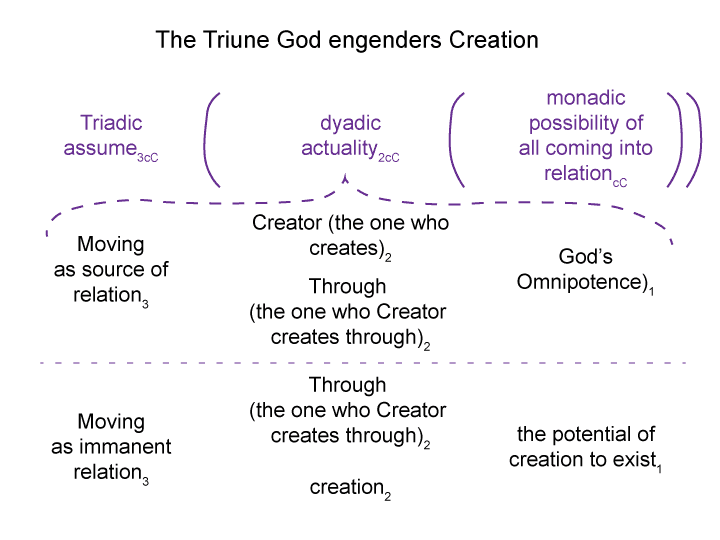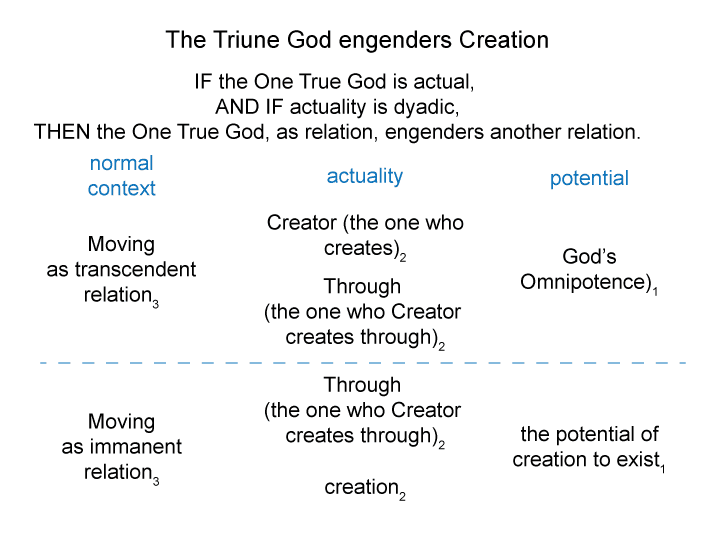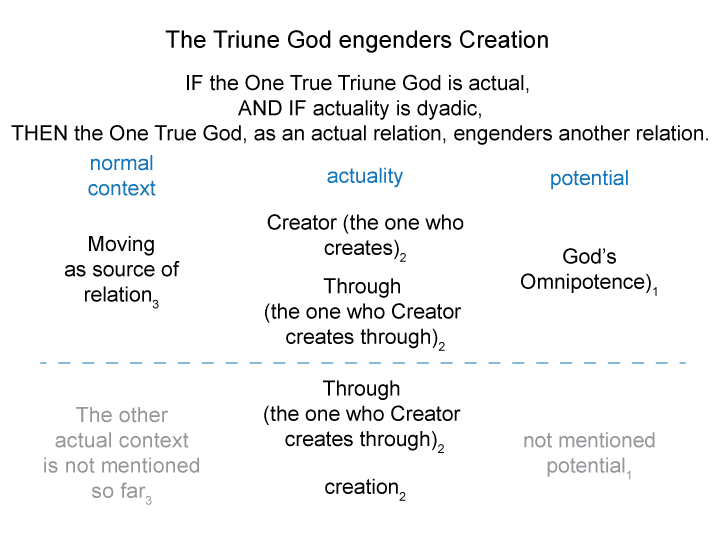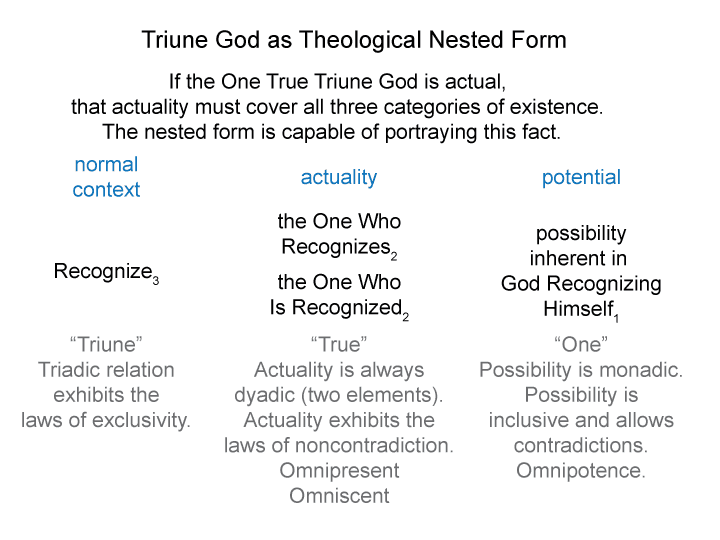Man and Sin by Piet Schoonenberg (1964) 2.1CA
Summary of text [comment] page 67
[The statement, “I recognize myself”, may unwittingly represent refusal and usurpation.
Theoretically, I should say, “I recognize God, as the only way to recognize myself.” This statement represents acceptance and openness.
This relation is not exactly the same as the preceding relations.
“The Holy Spirit3” brings “I (the created one who recognizes) and myself (the created one who is recognized)2” into relation with “His Omnipotent Oneness1” (which is contiguous with “the potential of creation to exist1“).
We acknowledge this relation because our creation (as actual relation) is contiguous with the Father and the Son (as actual relation), in the context of Assume!.]




